
Für eine deutsche Übersetzung dieser Seite einfach die Brandenburger Flagge anklicken
 |
Click the Brandenburg Flag for a German translation Für eine deutsche Übersetzung dieser Seite einfach die Brandenburger Flagge anklicken |


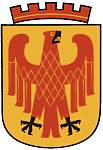 |
Home Towns - Potsdam, GermanyPotsdam's Rulers throughout the Centuries1320 - 1415 |
 |


 |
This site is part of our Potdam, Germany site. Click the left turn sign to get back to the Potsdam start site. |


 History is not made by individuals, but by people. However, the history made by the people is often associated with the rulers of the time. Here is a list of those who took credit and blame for Potsdam's history. We are not trying to compete with Wikipedia's comprehensive list of Rulers of Brandenburg although we have been trying to fill in some blanks here and there. Biographical references are generally limited to events affecting Potsdam and/or Brandenburg. The dates under the names don't refer to birth and death but rather to the time in office. Blue links lead to sites with more information, in most cases to a Wikipedia article. In some cases, we couldn't find an article in English language; in this case, Green links lead to articles in German language.
|
 |
Click the left-turn sign to get back to the previous section. Or, if you are interested in a different time period, click the U-turn sign to get to the "Rulers" start page. |
 |


 
|
Emperor Louis IV 1320-1323  With the votes of Peter of Aspelt, Archbishop of Mainz, Baldwin of Luxembourg, Archbishop of Trier, Johann II, Duke of Saxe-Lauenburg, John of Bohemia, the legitimate King of Bohemia and of Brandenburg's Margrave Waldemar, Louis the Bavarian from the House of Wittelsbach became German Counter King in 1314, rivaling King Frederick III from the House of Habsburg. In an eight-year long standoff, Louis finally succeeded and in 1322 he could call himself sole King of the Germans. For the vacant position of a Margrave of Brandenburg, Louis saw to it that Brandenburg's next electorial vote would benefit his own family. He ignored the claim of Ascanian Rudolph of Saxony (who had voted against him in the 1314 election) and handed the province to his own son. |
 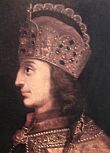 Wikipedia Biography
Wikipedia Biography
|

 
|
Rudolph I of Saxony 1320-1327  While the Houses of Wittelsbach, Luxembourg, and Habsburg fought each other for the German crown, the Brandenburg Margraviate was under the stewardship of Saxonian Duke Rudolph I. Rudolph, being a member of the Saxonian line of the House of Ascania, became legal guardian of Henry II, heir to the Brandenburg Throne, in 1319. With Henry's death in 1320, the Brandenburg line of the Ascanians came to an end, meaning the Ascanian tenure of Brandenburg ended too. Based on his Ascanian family background, Rudolph claimed Brandenburg for himself. |
 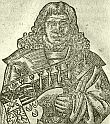 Wikipedia Biography
Wikipedia Biography
|
 |
While King and Counter King were struggling for the crown, neither one cared much about Rudoplph's claim and for the time being, the Saxonian Duke remained as the Steward of Brandenburg. But soon after Louis had smashed the opposition in 1322, he remembered Rudolph's vote in the Royal election of 1314. Together with Henry II of Virneburg, Arch Bishop of the Cologne Electorate, Rudolph I, Duke of Electoral Palatinate und Henry of Bohemia, who claimed a controversial second vote for Bohemia, Rudolph II, representing Saxe-Wittenberg, had voted for Frederick the Fair. Louis, now sovereign German King Louis IV, ignored Rudolph's claims and in 1323 he enfeoffed his own just eight year-old son with Brandenburg. Following that decision, Rudolph and his soldiers marched into Brandenburg and kept the province occupied for four years. It wasn't until 1327, that Rudolph gave in and acknowledged Louis I of Brandenburg as new Margrave. With him, most of the local noblemen accepted the inevitable. |

 
|
Louis of Brandenburg 1327-1351  Although Louis I, born in 1315 in Bavaria, called himself "The Brandenburgian", the Bavarian rule in Brandenburg never got much popularity. Furthermore, his father, German Emperor Louis IV, was constantly in conflict with other German Houses like Luxembourg and Habsburg, as well as with the pope. The early death of Louis IV in 1347 and the coronation of Luxembourgian Charles IV as Emperor in 1355 probably prevented a costly civil war in Germany, but it didn't make Louis I's stand in Brandenburg any easier.  In 1351, he resigned in favor of his half-brother Louis II.
|
  Wikipedia Biography
Wikipedia Biography
| ||||||||||||||||||||||||||||||||||||||
 
|
Waldemar the Fake 1348-1355  In spring of 1348, an old pilgrim asked for an audience with Brandenburg's Archbishop and presented a ring that was soon identified as the signet ring of King Waldemar, who was supposed to have been dead for 29 years. The pilgrim claimed to be that very Waldemar, one of the last Ascanian margraves. He told the archbishop that he faked his death and funeral and went on a pilgrimage to the Holy Land. But when he learned how his beloved Brandenburg had to suffer under foreign rule, he decided to return.  Of course, the man was an impostor, but his timing could not have been better. Leadership of the Holy Roman Empire had just passed from the House of Wittelsbach to the House of Luxembourg and the possibility to oust the unwanted Wittelsbachers from Brandenburg and reinstate Ascanian rule must have seemed like a miracle to young King Charles IV. It is not clear if he fell for Fake-Waldemar's trick or if he just seized the opportunity, but in October 1848, King Charles IV reinstated his "beloved brother-in-law" as Margrave.  The result was seven years of unrest and civil war, coinciding with the worst plague epidemic, the province had ever seen. It wasn't until 1355, that Waldemar the Fake officially resigned. It is believed that a man named Jakob Rehbock, a former servant of the real Waldemar used his inside knowledge to pull off one of history's biggest hoaxes.
|

| |||||||||||||||||||||||||||||||||||
 
|
Louis the Roman 1351-1365  In 1351, during the reign of Waldemar the Fake, legitimate Brandenburg ruler Louis I traded Brandenburg for Upper Bavaria and his half-brother Louis II, born in 1328 became the rightful Margrave of Brandenburg. His reign would have been rather uneventful had it not been for the fierce battles with the followers of Impostor-Waldemar and for a law enacted by Emperor Charles IV, that would shape the next 400 years of German history.  With the Golden Bull of 1356, the Holy Roman Empire became an Elective Monarchy. From now on, seven Kurfürsten or prince-electors were to choose the future Kings of the Romans, who would then usually be crowned Holy Roman Emperor of the German Nation by the Pope later. The Brandenburg Margrave became one the seven electors and thus, the rather inconspicuous Louis II became Brandenburg's first Kurfürst.
|

| ||||||||||||||||||||||||||||||||
 
|
Otto the Lazy 1365-1373  Louis II had no children, and after his death in 1365, his brother, Otto V, born in 1346, became Margrave and Elector of Brandenburg. Rarely has there been a name more fitting than Otto the Lazy. He totally neglected his government until Emperor Charles had seen enough and forced him to resign. Otto received a generous financial compensation for his resignation and spent the rest of his days in his Bavarian castle with amusement. He was the last Brandenburg Margrave from the House of Wittelsbach - an unglamorous end to an unglamorous part of Brandenburg's history.
|
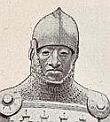 Wikipedia Biography
Wikipedia Biography
|
 
|
Emperor Charles IV 1371-1373  The Ascanians were native sons of Brandenburg and treated the land accordingly. In only 50 years, the House of Wittelsbach ruined everything the decedents of Albert the Bear had built over five generations. In 1371, Emperor Charles IV had it and invaded Brandenburg. Of course, the Emperor wasn't so much interest in local affairs but rather in securing Brandenburg's electoral vote for his own family. For two more years, he let Otto the Lazy play his games, but in 1373, he cut the strings of his poppet and installed his own son, Wenceslaus as the first Luxembourgian Margrave of Brandenburg. |
 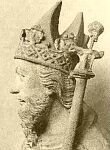 Wikipedia Biography
Wikipedia Biography
|
 |
Charles IV shaped European history for centuries to come when he introduced a new modus for the election of German Kings, the above mentioned Golden Bull of 1356. He also did something that turned out to be invaluable for historians for generations to come: Right after he acquired the Brandenburg Margraviate in 1373, he ordered a comprehensive inventory of all real estate in the province. Many towns in Brandenburg and many building within these towns - like Potsdam's oldest church - were first documented in this catalog. |

 
|
Wenceslaus of Luxembourg 1373-1378  Wenceslaus has been King of Bohemia ever since he was a little child. Now, he received Brandenburg too. In 1373, two years after Emperor Charles IV took matters in Brandenburg into his own hands, he enfeoffed his oldest son with the Margraviate. In case of a King's election, the House of Luxembourg now cold bank on two votes, Bohemia and Brandenburg.  Wenceslaus' life was full of power struggles within Germany and even within his own family. compared to other things he had to deal with, his years a Margrave of Brandenburg were relatively calm. In 1378, after the death of Emperor Charles IV, Wenceslaus became King of the Holy Roman Empire and handed the scepter of the Brandenburg Margraviate over to his half-brother Sigismund.
|
 |
 
|
Sigismund of Luxembourg 1378-1388  Sigismund took over the Brandenburg Margraviate from his half-brother Wenceslaus. Just like his predecessor, Sigismund too wasn't so much interested in Brandenburg as rather in a career in Germany and even Europe. In the years following his rise to Brandenburg Margrave, he also became King of Hungary, Croatia und Bohemia and finally in 1433 he was crowned Emperor of the Holy Roman Empire.  Sigismund's power struggles were expensive and so he used Brandenburg as an investment. In 1388, he put the entire province up as collateral for a substantial loan from his cousin Jobst of Moravia. however, in 1411, Sigismund returned one more time as Margrave and Prince Elector.
|
 |
 
|
Jobst of Moravia 1388-1411  Since 1375, Jobst was Margrave of Moravia. In 1387 Jobst helped his cousin Sigismund to become King of Hungary. In addition to diplomatic and military support, Sigismund received a substantial loan from Jobst. In return, Sigismund put Brandenburg up as collateral in 1388. Nine years later, in 1397, the German King officially declared Jobs Margrave of Brandenburg.  Like the two Luxembourgian Margraves before him, Jobst's ambitions were much bigger than Brandenburg. After the death of German King Rupert I, Jobs ran for election. In October 1410, he won, receiving one more vote than his cousin Sigismund. Amongst those voting for Jobst was Bohemian Margrave Wenceslaus, who ruled Brandenburg from 1373 through 1378. However, Jobst never officially assumed the Throne since he died just three months later under mysterious circumstances. Most likely, he was poisoned.
|
 |
 
|
King Sigismund 1411-1415  The mystery of Jobst's sudden death was never solved, but clearly, the big winner was Sigismund, who not only got rid of his debt but also of the competition in the struggle for the German Throne. In 1411, he had no problem winning the next Royal election. Later, in 1433, he was crowned Emperor, which he remained until his death in 1437. As German King, he was also, yet again, Margrave of Brandenburg. But being more concerned with the Empire, he gave up the Margraviate. One of his closest allies in the power struggles in Germany and Hungary was Frederick VI, Burgrave of Nuremberg. In appreciation of his services, Sigismund appointed Frederick in 1411 Captain and Steward of the March. In 1415, he awarded Frederick the heritable post of Prince Elector. Under the name Frederick I, the Brugrave of Nuremberg now became the first Brandenburg Margrave of the House of Hohenzollern.
|
 |

Quitzow

|
The Age of the Robber-Barons 1397-1417  Frederick took over a land in shambles. The official rulers resided hundreds of miles away in Luxembourg. In Brandenburg, might made right, and a handful of mighty local noble families enforced their own rules.  The Prussia-Chronicle reports about the year 1397, that "Robber-barons, led by the nobles of Putlitz, Bredow, Quitzow and Rochow ransacked towns and villages, robbed cattle, killed, pillaged and raped and escalated their family feuds."  Mightiest under the "robber-barons" were the von Quitzows. "Old Kuno" von Quitzow and his sons Dietrich, Johann, Conrad and Henning controlled no less than fourteen fortified settlements. The family raised trade taxes all over the province and even controlled navigation on river Elbe. History still remembers this period as "The Age of the Von Quitzows." |
 |
Putlitz

Rochow
Bredow
|
Other famous "Robber-Barons" of the time were
Kaspar Gans zu Putlitz, and
Wichard von Rochow. In all fairness it
must be said that the term "Robber-Baron" wasn't always used correctly. All it took to be branded as an outlaw was opposition to the central
government. The Quitzow-Brothers, for example, were celebrated patriots in their home towns Friesack and Plaue - and they are honored still
today.
When Frederick became Steward of Brandenburg, most noble families refused to acknowledge his authority. Johann von Quitzow called Frederick
contemptuously "The Nuremburg Gewgaw." The Quitzow-brothers resisted until 1414, when their fortresses were overrun by Frederick's "Robber-Baron
Campaign," which included the world's biggest canon to gun down the nine-feet
thick walls of the Quitzow's castles, making it the first recorded use of heavy artillery.
 Johann von Quitzow and Kaspar Gans zu Putlitz later made their peace with the new authorities, but Dietrich von Quitzow never gave in. In 1417, the last Brandenburg nobleman to stand up against the might of the Luxembourgian and Hohenzollern died in Frederick's dungeon.  While the Quitzow, Putlitz and Rochow families were in strong opposition to the King and his Margrave, another local noble family, von Bredow, was supporting the central power. Lippold von Bredow was Captain of the Mittelmark since 1386. He faithfully tried to enforce the King's law - not an easy task in a province torn apart by family feuds. After of Frederick's iron fist had restored "law and order," the Bredow family was the first to pledge allegiance to the new Margrave. They were rewarded with the second most prestigious post in the Margraviate: Henning von Bredow was Bishop of Brandenburg from 1406 until 1414 and Joachim von Bredow followed him 1485-1507. But in charge of Brandenburg was for the next 500 years the Hohenzollern Dynasty. |

  |
The House of Hohenzollern 1415-1918 In 1411, a group of Brandenburg citizen had an audience with King Sigismund and begged him for support against the "Robber-Barons." Sigismund appointed his faithful ally Frederick of the House of Hohenzollern Captain and Steward of Brandenburg. In 1414, Frederick started his "Robber-Barons Campaign" against the unruly Brandenburg nobles. His main goal was crushing Caspar Gans zu Putlitz and the Quitzow brothers.  To overcome the hevy fortification of the Robber-Baron's castles, Frederick borrowed a supergun from the Teutonic Knights. With the help of the biggest canon of its time, the Baron's fortresses in Friesack, Plaue, Kletzke and Golzow were battered down and - still in 1414 - Frederick declared a public peace. In appreciation of his efforts, he was promoted to Margrave and Prince Elector in 1415. In 1417, the King officially enfeoffed Brandenburg to Frederick and his Family.  Frederick I was the first in a long ancestral gallery, reaching from 1415 to 1918, covering more than twenty Margraves, Kings and Emperors. With that, the Hohenzollern family was the longest lasting dynasty in Brandenburg's history. |
 |
Click the right-turn sign to continue to Part 4 of our
Potsdam's Rulers Through the Centuries site, covering the Margraves of the Hohenzollern Dynasty (1415-1688). Or click the u-turn sign to returne to the "Rulers" start site. |

|


 Back to Potsdam Page |
 Back to Home Towns |
 Back to Germany Page |
 Back to English Main Page |
 Back to Start Page |